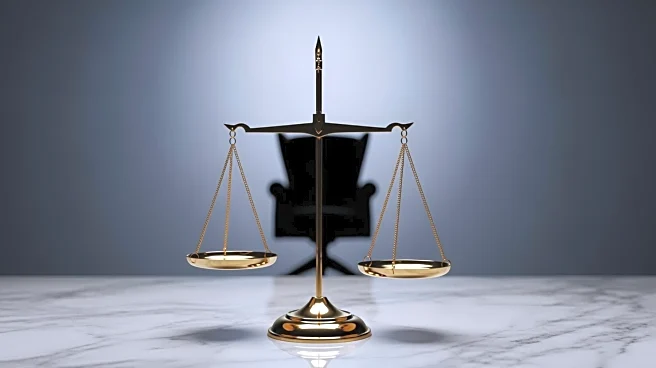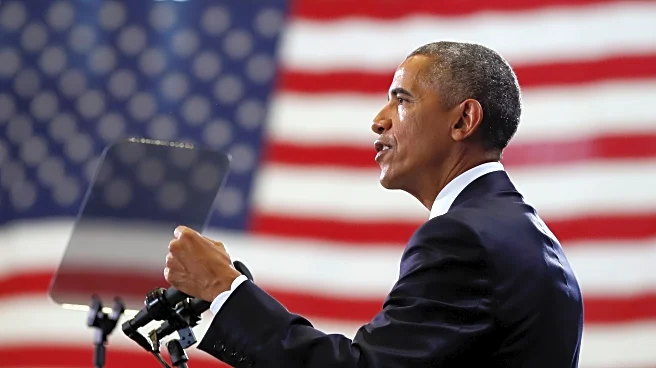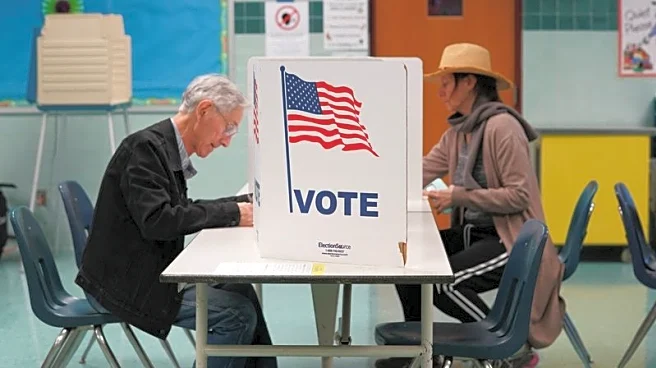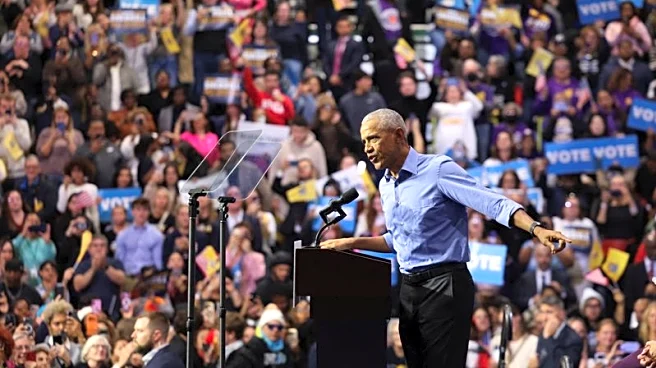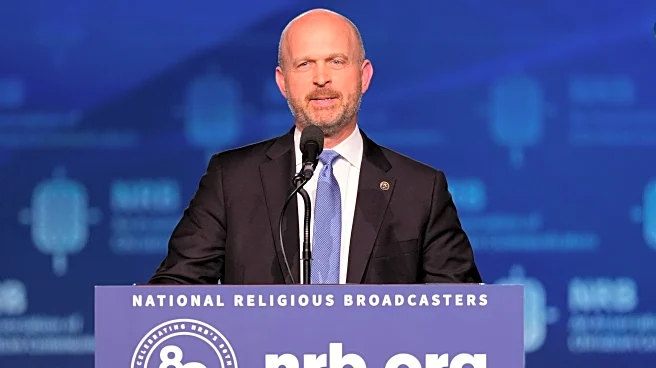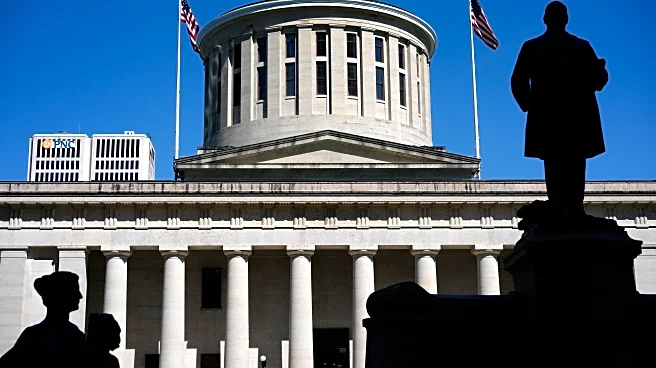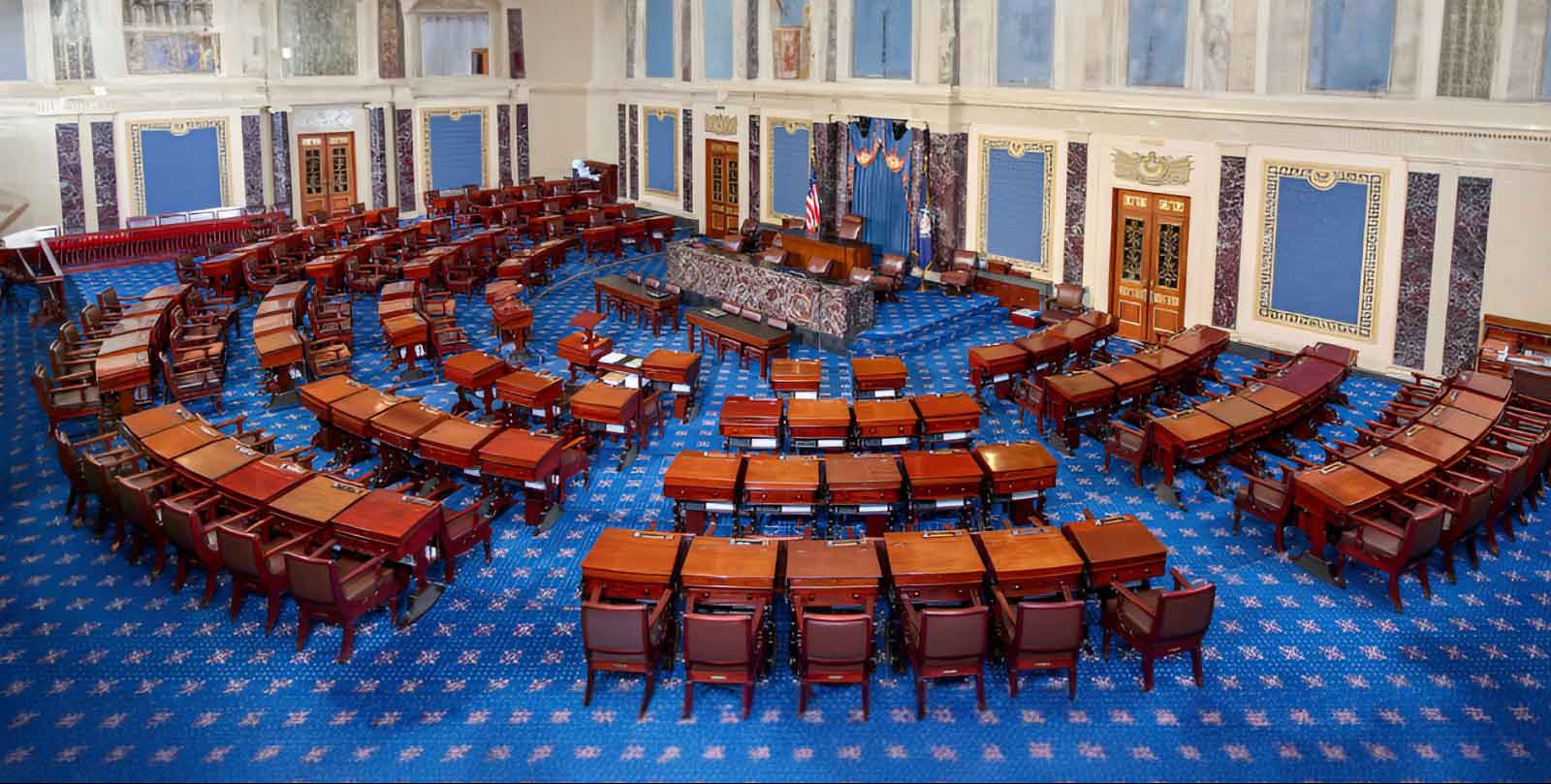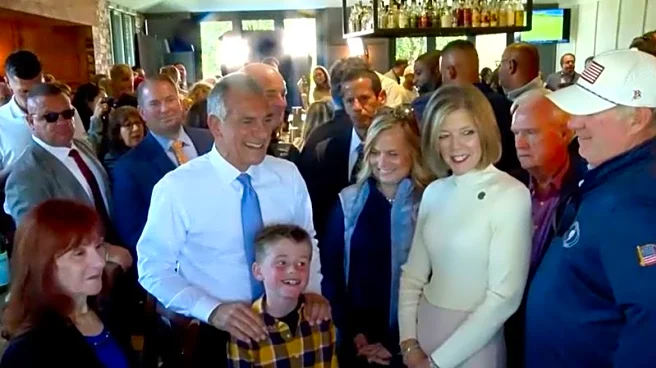What's Happening?
President Donald Trump's disapproval rating has increased to 59%, according to a recent Washington Post/ABC News/Ipsos poll. This marks a significant rise from previous months, reflecting growing voter
concerns about his use of executive power and deployment of the National Guard. Despite the increase in disapproval, 86% of Republicans continue to support him, while 95% of Democrats disapprove. The poll also highlights a perception among Americans that both President Trump and the political parties are 'out of touch' with their lives. Democrats hold a lead in the race for Congressional control, with 50% of voters favoring them over Republicans' 42%.
Why It's Important?
The rise in President Trump's disapproval rating could have significant implications for the upcoming midterm elections. With a substantial portion of the electorate viewing both major political parties as disconnected from their concerns, there is potential for shifts in voter allegiance. The disapproval of Trump's handling of key issues such as the economy, immigration, and federal management may influence voter turnout and preferences. Additionally, the perception of overreach in executive power could lead to increased scrutiny and debate over presidential authority, impacting future policy decisions and political strategies.
What's Next?
As the midterm elections approach, both parties will likely intensify their efforts to connect with voters and address the concerns highlighted in the poll. Democrats may focus on capitalizing on their lead in Congressional preference, while Republicans might work to reinforce their base's support for President Trump. The ongoing discussions about executive power and its limits could lead to legislative proposals aimed at curbing presidential authority. Furthermore, the perception of political parties being 'out of touch' may drive efforts to engage more directly with constituents and address their specific needs.
Beyond the Headlines
The poll results underscore a broader issue of political disconnection, which could lead to increased voter apathy or the rise of third-party movements. The dissatisfaction with both major parties might encourage voters to seek alternative political solutions, potentially reshaping the U.S. political landscape. Additionally, the focus on executive power and its perceived overreach may prompt discussions about constitutional amendments or reforms to ensure checks and balances within the government.
